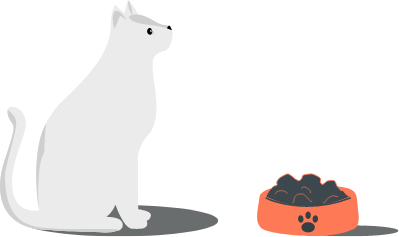
After neutering cats have a tendancy to eat more, whereas their energy requirements decrease by 25%1.
This can mean that the risk of weight gain is twice as high after neutering2.
Without any changes to their diet, cats' bodyweight can increase by over 20% after 6 months4.
About 70% of pet owners continue to feed their cat as much as they want after neutering3.
The health and well-being of your cat are closely related to maintaining an ideal body weight.
1. Yuka Mitsuhashi, Amy J. Chamberlin, Karen E. Bigley and John E. Bauer/ Maintenance energy requirement determination of cats after spaying. British Journal of Nutrition (2011), 106, S135-S138
2. Patrick G. Nguyen, DVM, MS; Henri J. Dumon, DVM, MS; Brigitte S. Siliart, DVM, MS; Lucile J. Martin, DVM, Ph.D; Renaud Sergheraert; Vincent C. Biourge, DVM, PhD. Effects of dietary fat and energy on body wiehgt and composition after gonadectomy in cats. AJVR, Vol 65, No. 12, December 2004.
3. Courcier EA, et al. Prevalence and risk factors for feline obesity in a first opinion practice in Glasgow, Scotland. J Feline Med Surg 2010; 12: 746-753.
4. Alfreda Wei, Andrea J. Fascetti, Kyougmi Kim, Ada Lee, James L. Graham, Peter J. Havel, Jon J. Ramsey. Early Effects of Neutering on Energy Expenditure in Adult Male Cats. February 2014, Volume 9, Issue 2, e89557.
An average cat putting on just 200g is the equivalent to a 70kg human gaining 3.5kg!
That being said, a cat that is only 1.5kg overweight can mean that their bodyweight has increased by a massive 40%! In the human world this would be the equivalent of a person with an ideal weight of 70kg reaching 100kg.
The amount of food given daily should be carefully assessed and recommendations followed. On average, a 4kg cat consumes the equivalent of 200 kcal per day, which represents around 50g of kibble. However, every individual is different and some adjustments may need to be made. If your cat is already overweight, and you base your ration on this then you unknowingly can make them obese in a few months. It is therefore very important to calculate the ration based on their ideal weight.
You should ask your veterinarian to estimate the amount of food to be given to your cat to cover its new needs. This ration amount will be reviewed (and possibly corrected) according to changes in your cat’s weight and body condition. A monthly review is recommended. Every day, carefully measure the ration with a measuring cup, or better, weigh the kibbles on a kitchen scale to avoid any risk of error. Over the long term, a few extra grams of kibbles each day weigh heavily in the calorie balance.
*Amount based on the feeding guidelines for our Veterinary HPM Neutered Range for Adult Cat. Please refer to our feeding recommendations available on our product pages or product packaging.
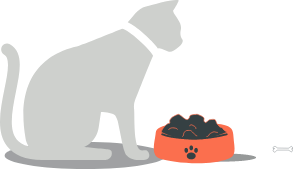
You can split the ration into several small meals per 24 hours, this may help respect the “grazing” behaviour of the cat. Splitting the distribution of the food also seems to encourage the physical activity of the cat and helps to stabilise its weight.
Do not confuse a request for contact or attention («will you play with me?») from your cat with a request for food. A cat who understands that its owner is ready to feed it whenever it rubs against their legs quickly learns to take advantage of the situation… For the cat to remain at its ideal weight throughout its life, it is necessary that the whole family understands this so we don't have extra feedings. It can be a good idea if only one person is in charge of feeding the animal.
Few owners regularly weigh their cat and they are unaware that their pet is gaining weight. Closely monitor the evolution of your cat's weight after neutering by weighing it at least twice a month. It is always easier to rectify the situation by reacting early.
The weighing must always be on the same scale: Weigh yourself holding the cat in your arms, then alone, and calculate the difference. However, it is necessary to have a very sensitive balance, capable of measuring a variation of ± 100g. If necessary, please ask your vet if you can come regularly to weigh your cat at the clinic.

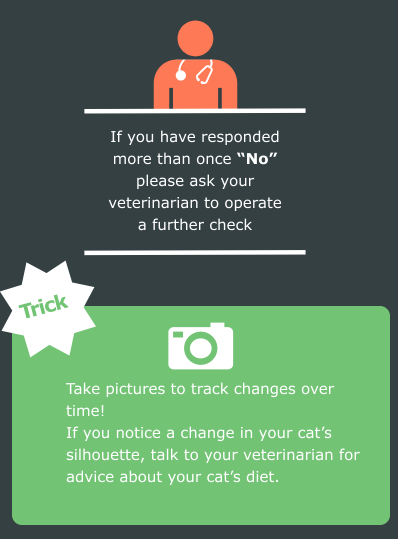
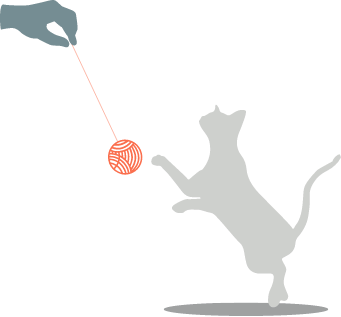
You can encourage them to play through the introduction of toys and games, try this over the course of the day. There are a lot of toys available to encourage activity of cats, generally relying on their hunting instinct to interest them. When you’re not there, you can also encourage your cat to expend energy by placing a fraction of their daily ration in a toy that they must roll to release the kibble.
By «working» to eat, they will not be bored and above all it will expend some calories while trying to extract the kibble!
After neutering the energy requirements are 25 to 30% lower.
After neutering the energy requirement is reduced by more than 20%1. You should avoid just simply reducing the ration given to your cat as they may feel very frustrated at being on a severely reduced ration and will soon be begging for more food. In addition, a significant dietary restriction may also expose the cat to nutritional deficiencies. It must receive all nutritional components essential to its health in sufficient quantity.
After neutering it might be better to give your cat a food adapted to its new needs. You can even make the transition a few days before the operation, to avoid stress for your cat due to a change in diet during recovery. A food specially formulated for neutered cats brings fewer calories while allowing to maintain a sufficient ration volume. To lower the energy concentration, this type of food generally contains less fat than a conventional maintenance food.
![Calque 2.png]() A full range of products, tailor-made for your neutered cat’s needs help him to stay healthy throughout his life.
A full range of products, tailor-made for your neutered cat’s needs help him to stay healthy throughout his life.



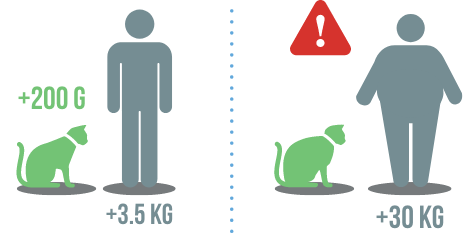
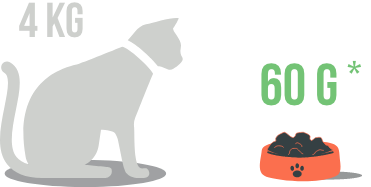
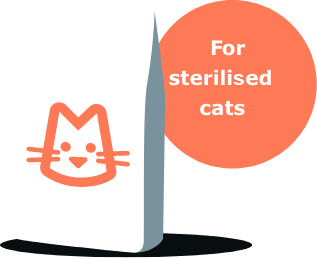
 A full range of products, tailor-made for your neutered cat’s needs help him to stay healthy throughout his life.
A full range of products, tailor-made for your neutered cat’s needs help him to stay healthy throughout his life.